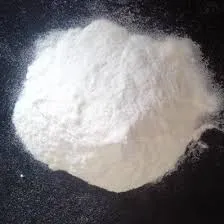
Aug . 14, 2024 21:10 Back to list
Exploring the Versatile Applications of Hydroxypropyl Methylcellulose in Various Industries
Hydroxypropyl Methylcellulose Versatile Applications in Various Industries
Hydroxypropyl methylcellulose (HPMC) is a cellulose derivative that has gained popularity across various industries due to its unique properties and versatile applications. This non-ionic, water-soluble polymer exhibits excellent film-forming, thickening, and stabilizing capabilities, making it an essential ingredient in numerous formulations.
One of the most significant uses of HPMC is in the pharmaceutical industry. It serves as a binder and stabilizer in tablet formulations, enhancing the mechanical strength and ensuring uniform distribution of active pharmaceutical ingredients (APIs). In controlled-release formulations, HPMC aids in regulating the release of drugs, providing a more consistent therapeutic effect over time. Its biocompatibility makes it a preferred choice for various drug delivery systems, including ocular, oral, and injectable formulations.
Hydroxypropyl Methylcellulose Versatile Applications in Various Industries
The cosmetic and personal care sectors also benefit from HPMC's properties. In cosmetics, HPMC is employed as a thickening agent and stabilizer in creams, lotions, and gels. It enhances the texture and aesthetic appeal of these products while providing a smooth application. Moreover, HPMC can improve the viscosity and suspension of certain cosmetic formulations, ensuring an even distribution of active ingredients. With consumers increasingly seeking natural and effective products, HPMC’s role in formulating safe and effective cosmetic products has become more prominent.
hydroxypropyl methylcellulose uses

In the construction industry, HPMC plays a crucial role as a thickener and water-retaining agent in cement and mortar formulations. It enhances the workability and adhesion of the mixtures, making them easier to apply while ensuring they maintain moisture for optimal curing. This property is particularly beneficial in tile adhesives and wall plasters, where a strong bond and sufficient open time are critical for successful application.
Additionally, HPMC is gaining traction in the realm of 3D printing. Its ability to form strong, flexible films makes it a valuable component in the production of biodegradable filaments. As the demand for sustainable and eco-friendly materials increases, HPMC is positioned to contribute significantly to the development of innovative 3D printing solutions that are both effective and environmentally responsible.
HPMC's versatility extends to the agricultural sector as well. It is used as a thickening agent and binder in the formulation of various agricultural pesticides and herbicides. By improving the stability and distribution of active ingredients, HPMC enhances the overall effectiveness of these products. This application supports the growing need for efficient pest management solutions in agriculture, further highlighting HPMC's diverse utility.
In conclusion, hydroxypropyl methylcellulose is a multifaceted polymer that plays a vital role in a wide range of industries, including pharmaceuticals, food, cosmetics, construction, 3D printing, and agriculture. Its unique properties, such as solubility, film-forming abilities, and thickening capacity, ensure that it meets the diverse demands of manufacturers and consumers alike. As industries continue to innovate and seek sustainable solutions, HPMC's relevance and application scope are likely to expand even further, solidifying its position as a critical ingredient in modern formulations.
-
Versatile Hpmc Uses in Different Industries
NewsJun.19,2025
-
Redispersible Powder's Role in Enhancing Durability of Construction Products
NewsJun.19,2025
-
Hydroxyethyl Cellulose Applications Driving Green Industrial Processes
NewsJun.19,2025
-
Exploring Different Redispersible Polymer Powder
NewsJun.19,2025
-
Choosing the Right Mortar Bonding Agent
NewsJun.19,2025
-
Applications and Significance of China Hpmc in Modern Industries
NewsJun.19,2025







